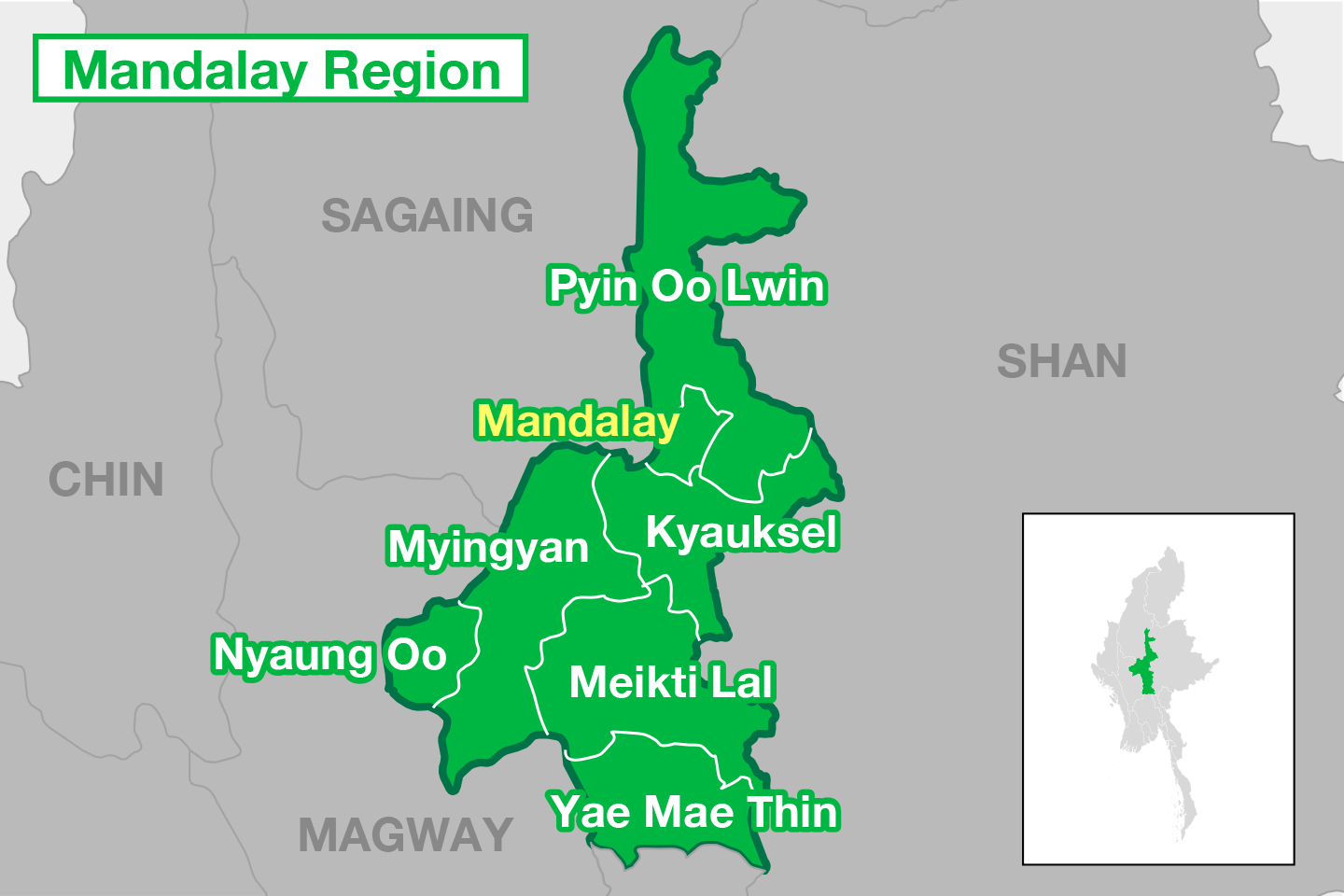 This region is considered to be the heart of Upper Myanmar. It is also known as the center of Burmese traditional arts and culture. Mandalay is the second largest city in Myanmar, follows after Yangon which in turn is the economic capital. Another accolade that the city holds is the fact that it is the last royal capital of the country – being home to the final royal family to rule Myanmar. Mandalay is located along the east bank of the Irrawaddy River. The strategic location of the city at the geographical center of the country as well as access to vital waterways has made it the economic center of Upper Myanmar as well.
This region is considered to be the heart of Upper Myanmar. It is also known as the center of Burmese traditional arts and culture. Mandalay is the second largest city in Myanmar, follows after Yangon which in turn is the economic capital. Another accolade that the city holds is the fact that it is the last royal capital of the country – being home to the final royal family to rule Myanmar. Mandalay is located along the east bank of the Irrawaddy River. The strategic location of the city at the geographical center of the country as well as access to vital waterways has made it the economic center of Upper Myanmar as well.
Popular Points of Interest
U Bein Bridge
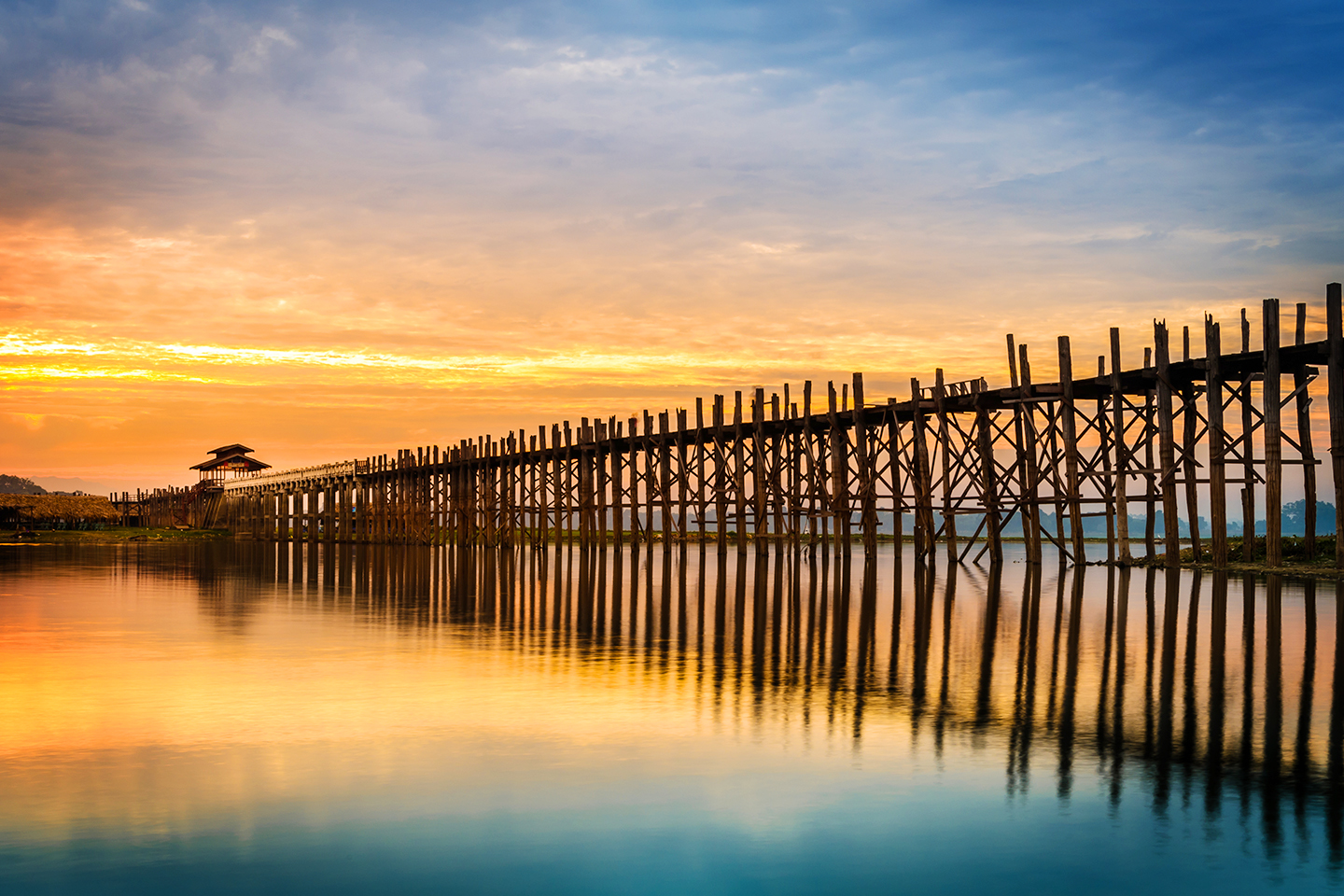 This magnificent structure is considered as the longest teakwood bridge built by man. It has a length of 1.2 km and it was built around at the year of 1859. The bridge is located on the Taung tha Man Lake near the Amarapura. The main purpose of the bridge was to serve as a footpath for the local people to use to cross over the lake. It has since become a very popular as the tourist attraction known from the whole world, while still fulfilling its original duties from all those years ago. Aside from the structure itself, one can find quite a number of souvenir vendors all over the area to buy mementos and gifts from. It is also very well known as a haven for the tourists and people from all walks of life who would like to take photographs or videos given the very scenic environment. The best time to be at the bridge would be to view the very beautiful sunset in the late afternoon with the waters of the lake offering the golden reflections of the sky. The sunset scene has been depicted countless times in the postcards, paintings, and feature photos.
This magnificent structure is considered as the longest teakwood bridge built by man. It has a length of 1.2 km and it was built around at the year of 1859. The bridge is located on the Taung tha Man Lake near the Amarapura. The main purpose of the bridge was to serve as a footpath for the local people to use to cross over the lake. It has since become a very popular as the tourist attraction known from the whole world, while still fulfilling its original duties from all those years ago. Aside from the structure itself, one can find quite a number of souvenir vendors all over the area to buy mementos and gifts from. It is also very well known as a haven for the tourists and people from all walks of life who would like to take photographs or videos given the very scenic environment. The best time to be at the bridge would be to view the very beautiful sunset in the late afternoon with the waters of the lake offering the golden reflections of the sky. The sunset scene has been depicted countless times in the postcards, paintings, and feature photos.
Mandalay Hill
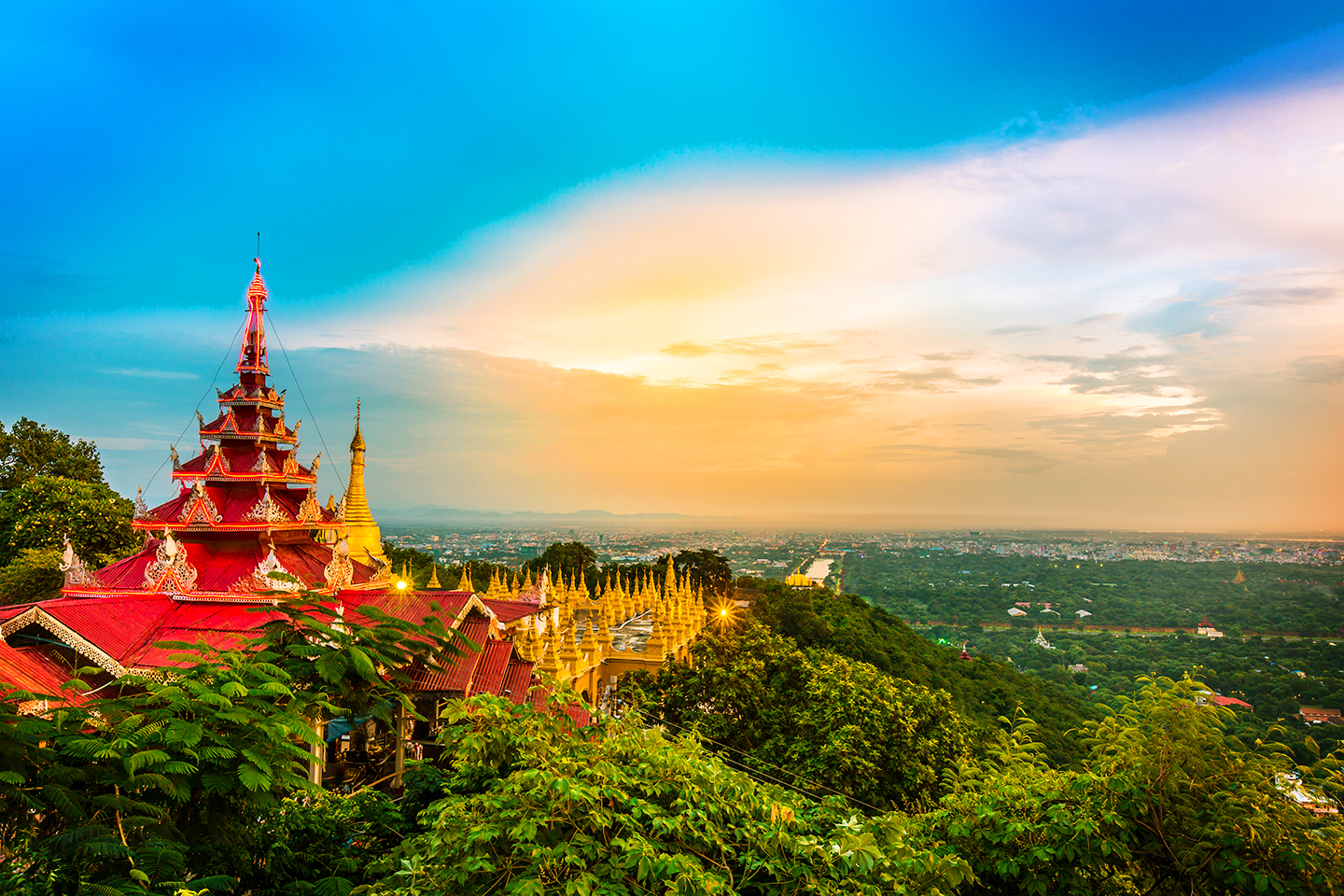 Standing at 240 meters (790 feet) tall, this hill is arguably the most prominent feature in the Mandalay skyline. It is located towards the northeast direction from the city center. At top is the Su Taung Pyae Pagoda with its ornate designs and mesmerizing architecture. The hill provides a bird’s eye view of Mandalay City and one can see far into the horizon during the clear days. There are 1,792 steps from the base to the top most viewing point. At the halfway point, there is a ‘Standing Buddha’ statue, whose right hand is pointing towards the city center. It is said that Buddha pointed towards the location where the royal palace now stands and prophesized that a great kingdom will raise from there. There are also two cobra statues within the grounds of the hill’s summit. They are the memorials for the two snakes that were believed to visit the Standing Buddha when the prophecy was made. The best time to visit is during the sunset, which is around from 5:00 pm to 5:30 pm in the afternoon (also known as “the Golden Hour”).
Standing at 240 meters (790 feet) tall, this hill is arguably the most prominent feature in the Mandalay skyline. It is located towards the northeast direction from the city center. At top is the Su Taung Pyae Pagoda with its ornate designs and mesmerizing architecture. The hill provides a bird’s eye view of Mandalay City and one can see far into the horizon during the clear days. There are 1,792 steps from the base to the top most viewing point. At the halfway point, there is a ‘Standing Buddha’ statue, whose right hand is pointing towards the city center. It is said that Buddha pointed towards the location where the royal palace now stands and prophesized that a great kingdom will raise from there. There are also two cobra statues within the grounds of the hill’s summit. They are the memorials for the two snakes that were believed to visit the Standing Buddha when the prophecy was made. The best time to visit is during the sunset, which is around from 5:00 pm to 5:30 pm in the afternoon (also known as “the Golden Hour”).
Myanmar Marionettes
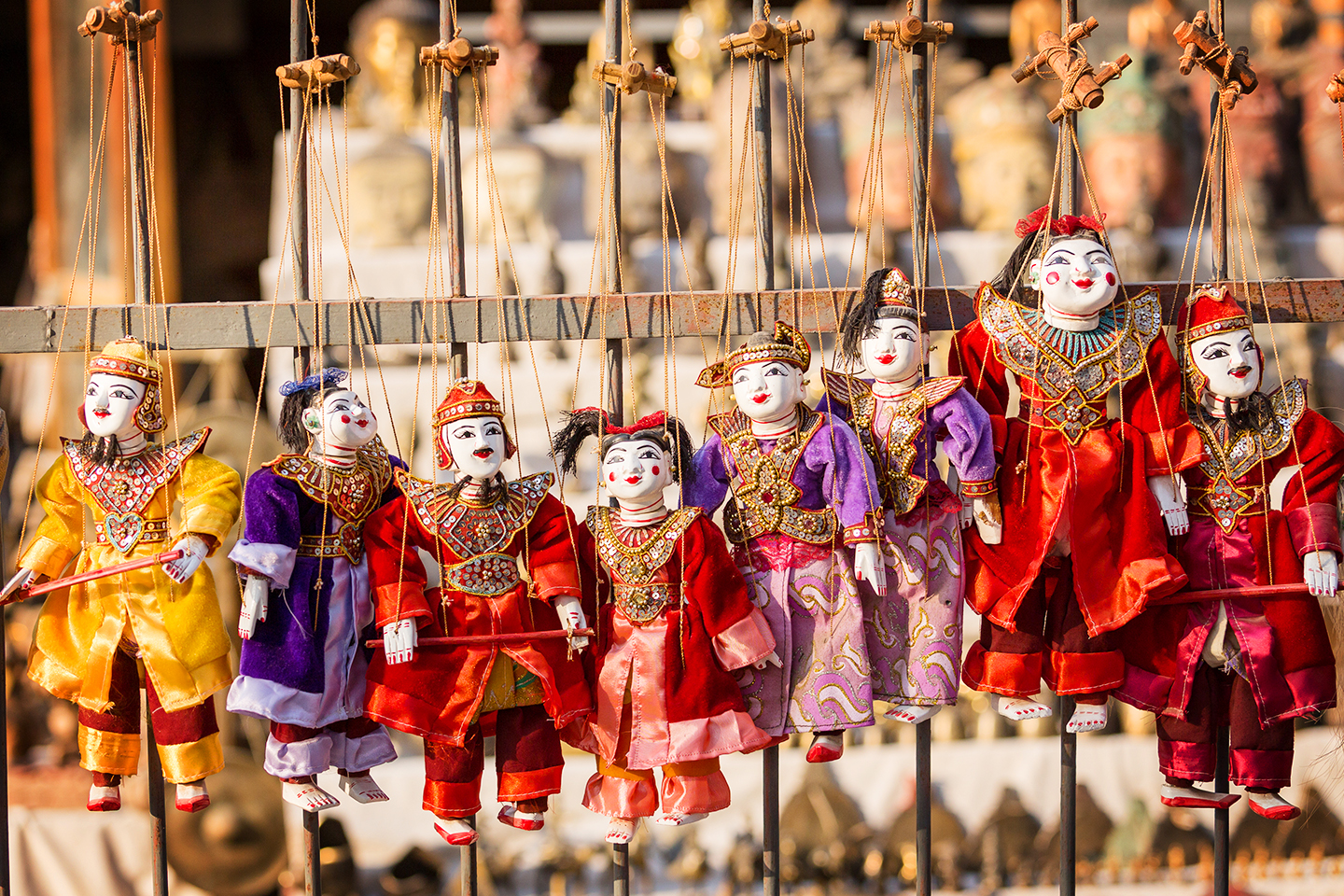 This is a puppet theatre that is very famous in Mandalay. On a very small stage, the ornate marionettes designed with lots of details and colors skillfully relive the little moments in the history and from the traditional stories in this puppet show. Once in a while, the curtain is raised so that people can be amazed at the very precise hand acrobatics of the puppeteers whose age can range into the 80’s to 90’s. These masters of the craft have the multiple decades of experiences and have also performed in the world stage. For the aspiring puppeteers, there are also a wide variety of puppets that can be bought here.
This is a puppet theatre that is very famous in Mandalay. On a very small stage, the ornate marionettes designed with lots of details and colors skillfully relive the little moments in the history and from the traditional stories in this puppet show. Once in a while, the curtain is raised so that people can be amazed at the very precise hand acrobatics of the puppeteers whose age can range into the 80’s to 90’s. These masters of the craft have the multiple decades of experiences and have also performed in the world stage. For the aspiring puppeteers, there are also a wide variety of puppets that can be bought here.
Mahamuni Pagoda
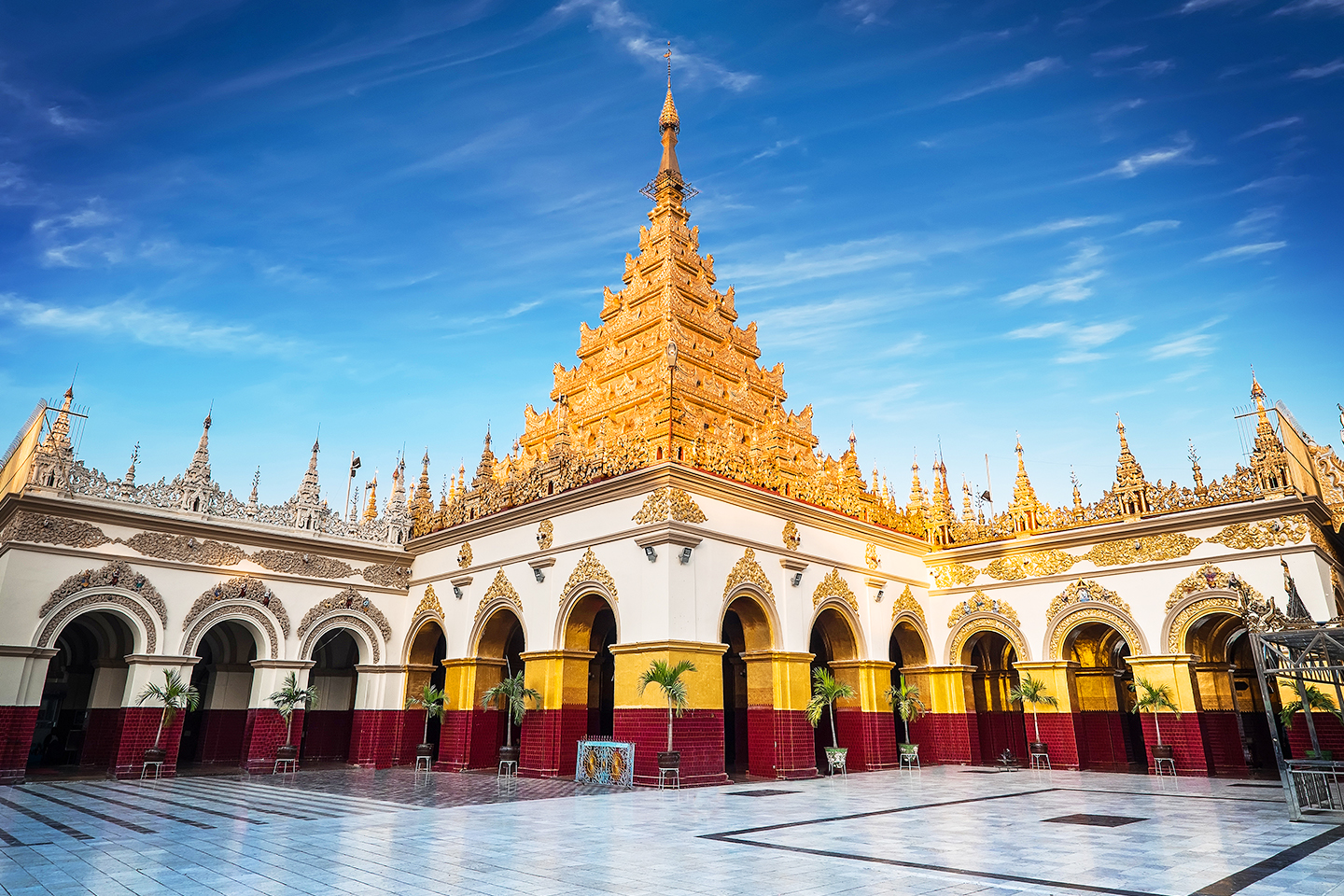 This is not only the most famous Buddhist temple but also the signature of Mandalay. Thousands and thousands of ornately dressed followers go to worship on a daily basis. The Mahamuni Pagoda is 13 feet tall ‘Seated Buddha’ – a well-known symbol country wide and that is widely considered to be over 2,000 years old. The votary gold leaf that have been installed by the male faithfully (women are only allowed to observe) over the hundreds of years has resulted into the statue having a rough surface with a 6 inch layer of real gold. That is, with exception to his brightly glowing face that is consistently polished on a daily basis on every 4 am in the early morning. Closely located to Mahamuni Pagoda outer Northeast exit is the Maha Buddhavamsa Museum of World Buddhism which is basically a collection of the artworks regarding the life story of the Buddha as well as the pictures of the archaeological digs related to the time period. From the middle shrine with its complex roof laden with the gold as well as the lengthy concrete halls heading into 4 main directions, there are numerous stalls that populate every inch of the available space that sells all kinds of the religious items. The western hallway opens up into the 84th Street and leads the people towards the incredible marble workshops wherein statues of the Buddha are skillfully created with the help of power tools.
This is not only the most famous Buddhist temple but also the signature of Mandalay. Thousands and thousands of ornately dressed followers go to worship on a daily basis. The Mahamuni Pagoda is 13 feet tall ‘Seated Buddha’ – a well-known symbol country wide and that is widely considered to be over 2,000 years old. The votary gold leaf that have been installed by the male faithfully (women are only allowed to observe) over the hundreds of years has resulted into the statue having a rough surface with a 6 inch layer of real gold. That is, with exception to his brightly glowing face that is consistently polished on a daily basis on every 4 am in the early morning. Closely located to Mahamuni Pagoda outer Northeast exit is the Maha Buddhavamsa Museum of World Buddhism which is basically a collection of the artworks regarding the life story of the Buddha as well as the pictures of the archaeological digs related to the time period. From the middle shrine with its complex roof laden with the gold as well as the lengthy concrete halls heading into 4 main directions, there are numerous stalls that populate every inch of the available space that sells all kinds of the religious items. The western hallway opens up into the 84th Street and leads the people towards the incredible marble workshops wherein statues of the Buddha are skillfully created with the help of power tools.
Bagaya Kyaung
 This is the most well-known Buddhist monastery in the Inwa area. This beautiful teak monastery built in 1834 and it is Inwa’s most popular single tourist spot. It is propped up by 267 teak foundation posts with the largest being 60 feet tall and 9 feet wide. This creates a cold and solemn prayer area that is mostly devoid of light and feels authentically old. The stained wooden posts are carved with repeating patterns of peacock and lotus designs. Even with the endless influx of the tourists and visitors, the structure still functions as an operational monastery with replica globes hanging on top of the humble school area to aid in the geography classes.
This is the most well-known Buddhist monastery in the Inwa area. This beautiful teak monastery built in 1834 and it is Inwa’s most popular single tourist spot. It is propped up by 267 teak foundation posts with the largest being 60 feet tall and 9 feet wide. This creates a cold and solemn prayer area that is mostly devoid of light and feels authentically old. The stained wooden posts are carved with repeating patterns of peacock and lotus designs. Even with the endless influx of the tourists and visitors, the structure still functions as an operational monastery with replica globes hanging on top of the humble school area to aid in the geography classes.
The Mandalay People
The population of Mandalay is currently estimated at around a million although it is expected to increase to about 1.5 million by 2025. Even though Mandalay has previously been considered to be the center of Burma culture, the arrival of Han-Chinese in the last 20 or so years has affected the native population there. A large group of Indian migrants also currently lives in Mandalay. Burmese is the main language of the city although Chinese is being adopted in ever greater numbers. English is the third primary language that is used mainly in the urban areas.
Mandalay Fort & Moat
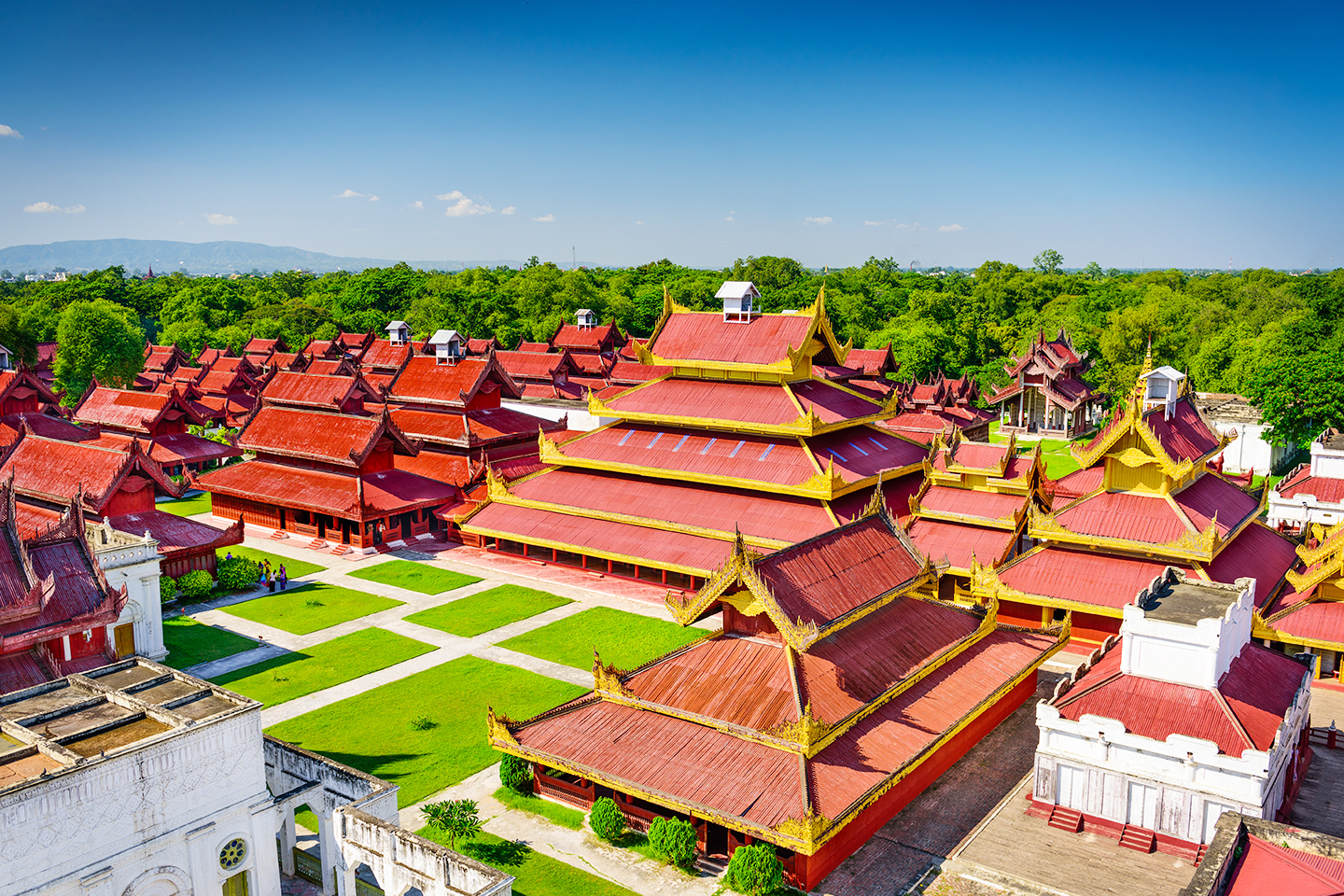 The Mandalay Fort is one of the greatest prides of Mandalay and Myanmar. This fort was built by King Mindon, who transferred his capital in the 1850s to this city after his brother, King Bagan. He built the fort, the beautiful palace and other structures in the 1857s. The surrounding the Fort is a big wall and a moat. The walls are very impressive and can be seen from anywhere, with walls and sentry guards as the added protection. The inside of the Palace was destroyed during World War II when it was occupied by the Japanese and later bombed by the Allied Forces. Before its destruction, the teakwood monastery was shifted outside the walls and is the only original survivor of the old Fort. The Royal Palace Monastery below the Mandalay Hill is the most famous attraction in the city. The Palace was rebuilt in the 1990s to its original design. The Audience Hall Quarters of Queens and all the other buildings were all reconstructed. The Watch Tower provides 360 degree panoramic views of the Fort and it is a must visit spot to enjoy the breathtaking scenery. The immense walls are 8 meters in height and 3 meters in thickness at the bottom, tapering to 1.5 meters in thickness at the top which are made of bricks. Each of the four sides extends 2 km long. The surrounding moat is 70 meters wide and 3 meters in depth. The fort was updated a lot in the recent times. It was completely renovated into a modern architectural style. Just as it was and always has been, the Mandalay Fort and Moat still serve as the soul of Mandalay city.
The Mandalay Fort is one of the greatest prides of Mandalay and Myanmar. This fort was built by King Mindon, who transferred his capital in the 1850s to this city after his brother, King Bagan. He built the fort, the beautiful palace and other structures in the 1857s. The surrounding the Fort is a big wall and a moat. The walls are very impressive and can be seen from anywhere, with walls and sentry guards as the added protection. The inside of the Palace was destroyed during World War II when it was occupied by the Japanese and later bombed by the Allied Forces. Before its destruction, the teakwood monastery was shifted outside the walls and is the only original survivor of the old Fort. The Royal Palace Monastery below the Mandalay Hill is the most famous attraction in the city. The Palace was rebuilt in the 1990s to its original design. The Audience Hall Quarters of Queens and all the other buildings were all reconstructed. The Watch Tower provides 360 degree panoramic views of the Fort and it is a must visit spot to enjoy the breathtaking scenery. The immense walls are 8 meters in height and 3 meters in thickness at the bottom, tapering to 1.5 meters in thickness at the top which are made of bricks. Each of the four sides extends 2 km long. The surrounding moat is 70 meters wide and 3 meters in depth. The fort was updated a lot in the recent times. It was completely renovated into a modern architectural style. Just as it was and always has been, the Mandalay Fort and Moat still serve as the soul of Mandalay city.
 English
English 日本語
日本語 မြန်မာ
မြန်မာ 汉语
汉语 國語
國語 ภาษาไทย
ภาษาไทย
